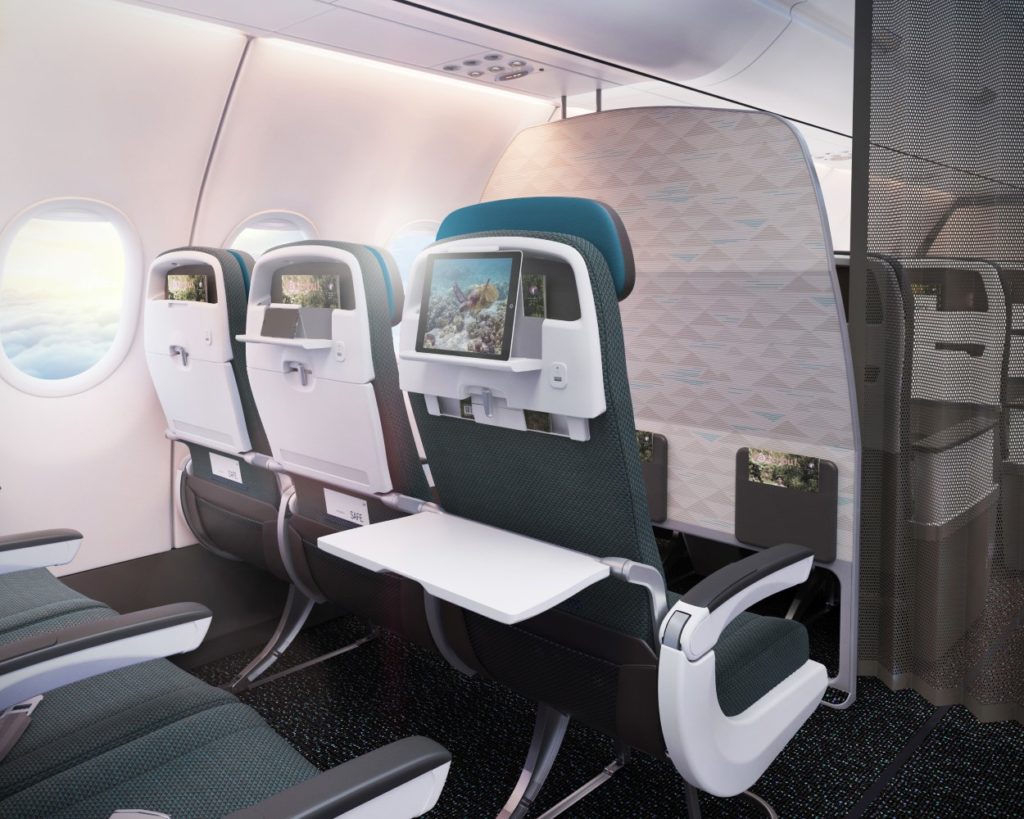Hawaiian Airlines has always indicated that its incoming Airbus A321neo fleet would be used to launch new routes, mostly away from its Honolulu hub. This week the carrier announced its first three A321neo services – one is a new city pair for the carrier, and the other two are seasonal routes which will be converted to year-round with the new aircraft.
The inaugural A321neo commercial flight will occur on 8 January 2018 between Oakland and Maui. But this is a one-off service – the A321neo will temporarily replace the Boeing 767 that typically flies this existing route – rather than a permanent substitution. The first full-time route for the A321neo will be a new service between Portland, Oregon and Maui starting on 18 January. Hawaiian is growing its mainland flights to compete with Alaska Airlines (which currently serves the route) and a significant increase in capacity to Hawaii from United Airlines which starts this winter.
Following the introduction of Portland-Maui, two historically seasonal 767 routes will gain year-round status thanks to the A321neo. Flights between Kona and Los Angeles begin on 11 March 2018, while flights between Kaua’i and Oakland begin on 11 April. The Los Angeles-Kona flights will begin with 767s and convert to the A321neo as new deliveries join the fleet. Delays from Airbus have forced Hawaiian to adjust the entry-into-service schedule already, and further tweaks would not be too surprising.
For passengers the new service means some notable upgrades to the inflight product as the 767s are retired and replaced. Hawaiian’s premium-heavy A321neos will be its first aircraft to offer wireless streaming entertainment and tablet/device holder integrated into the tray table or seatback, depending on class of service. All seats will have high-power USB power outlets available, with the Premium Cabin (first class) and Extra Comfort (extra legroom) seats also featuring standard 110V outlets. Interior fittings, including seat fabrics and LED lighting are designed to “reflect traditional island crafts”, according to the company. Design house JPA played a pivotal role in crafting this interior. Other amenities on board, including complimentary meals and snacks, match the service on the rest of the carrier’s fleet.
Notably missing from the new aircraft, however, is inflight connectivity. The Panasonic Avionics onboard streaming solution will support a BYOD environment, with no embedded screens, keeping weight and costs down.
But with the entire Hawaiian fleet remaining offline, including new delivery A321neos, the lack of a live connection on board is ever more notable to your author. Yes, more travelers to Hawaii fit into the leisure category, but those passengers also tend to want the option to connect.
Back in 2015, Hawaiian explained its disconnected status thusly: “Our decisions around in-cabin wifi are less about what other carriers’ global strategies look like and more driven by the cost and the performance of the technology. In order for connectivity to be a good fit for our strategy and guests, it would need to meet the basic criteria of good economics, strong performance over the Pacific and sufficient bandwidth to guarantee a high quality guest experience on a widebody aircraft.”
Separately, from an operational perspective it is also interesting to note that the A321neo fleet will serve three distinct island airports and also three different destinations on the mainland.
The flight times are such that the planes will do relatively quick turns (under 2 hours) on the islands with the longer sits on the mainland side of the trip. It will be interesting to see how the carrier approaches fleet utilization and adding new routes to the A321neo network as additional aircraft are delivered.
Related Articles:











